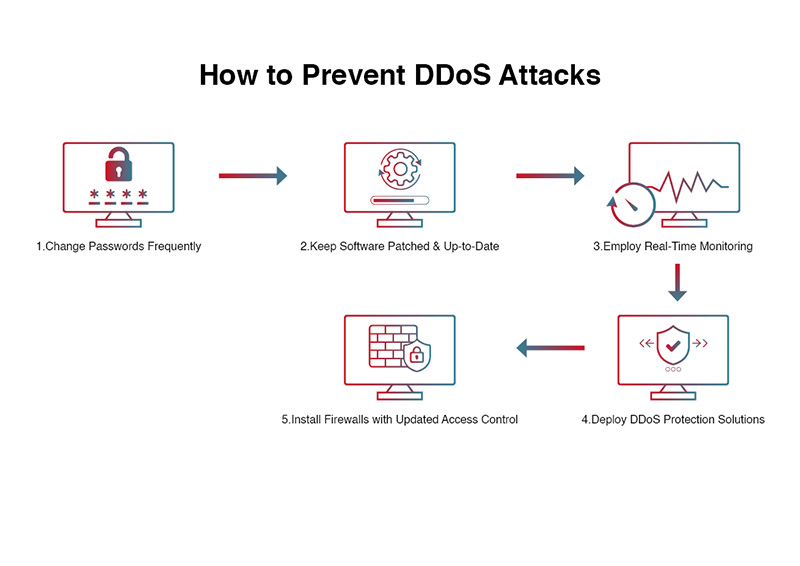Protecting Against DDoS Attacks
With the rise of online businesses and e-commerce websites, protecting against DDoS attacks has become more crucial than ever. DDoS, short for Distributed Denial of Service, is a malicious attempt to disrupt the normal traffic of a targeted server, service or network by overwhelming it with a flood of internet traffic. These attacks can result in downtime, loss of revenue, and damage to a company’s reputation.
Fortunately, there are several proactive measures that businesses can take to protect themselves against DDoS attacks and mitigate their impact. Implementing a comprehensive DDoS protection strategy is essential to safeguarding your online presence and ensuring the continued availability of your services to customers.
1. Regularly Monitor Network Traffic
One of the key steps in protecting against DDoS attacks is to regularly monitor your network traffic. By keeping a close eye on incoming and outgoing traffic, you can quickly detect any unusual patterns or spikes that may indicate a potential DDoS attack in progress. Implementing network monitoring tools and setting up alerts for abnormal traffic behavior can help you respond swiftly to mitigate the impact of an attack.
2. Use a Web Application Firewall
Deploying a web application firewall (WAF) is another effective way to protect your online assets against DDoS attacks. A WAF acts as a shield between your web server and the internet, filtering out malicious traffic and blocking potential threats before they reach your network. By configuring your WAF to block suspicious IP addresses and restrict access to vulnerable areas of your website, you can significantly reduce the risk of a successful DDoS attack.
3. Implement Rate Limiting
Rate limiting is a technique used to restrict the number of requests that a user can make within a specified timeframe. By implementing rate limiting on your website or application, you can prevent users from sending an excessive number of requests that may overload your server and lead to a DDoS attack. Setting up thresholds for the maximum number of requests per user can help you effectively manage traffic spikes and protect against potential threats.
4. Utilize Content Delivery Networks
Content Delivery Networks (CDNs) are geographically distributed networks of servers that work together to deliver web content to users based on their location. By caching and serving content from edge servers located closer to your users, CDNs can help reduce the load on your primary server and improve the performance of your website. In addition, CDNs can also provide protection against DDoS attacks by absorbing and filtering malicious traffic before it reaches your origin server.
5. Prepare a DDoS Response Plan
Developing a comprehensive DDoS response plan is essential to effectively deal with a DDoS attack if one occurs. Your response plan should outline the steps to take in the event of an attack, including who to notify, how to isolate affected systems, and how to restore service to normal operation. By preparing in advance and practicing your response plan regularly, you can minimize the impact of a DDoS attack and ensure a quick recovery of your services.
Conclusion
Protecting against DDoS attacks is a critical aspect of maintaining the security and availability of your online assets. By implementing proactive measures such as monitoring network traffic, deploying a web application firewall, implementing rate limiting, utilizing content delivery networks, and preparing a DDoS response plan, you can strengthen your defenses against malicious attacks and safeguard your business from potential disruptions. Remember, staying one step ahead of cyber threats is key to ensuring the continued success of your online operations.
